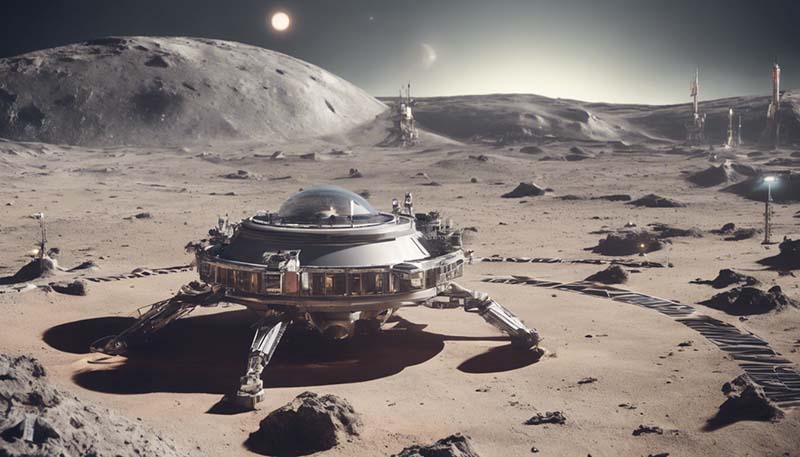The concept of space colonization has long been a fascination for scientists, engineers, and dreamers alike. As we continue to explore the cosmos, the idea of establishing a permanent presence beyond Earth becomes increasingly relevant. One of the most promising options for such a presence is the establishment of lunar bases. In this article, we will delve into the reasons behind this endeavor, the challenges that must be overcome, and the potential benefits of colonizing the Moon.
Why Lunar Bases?
The Moon is Earth's closest celestial neighbor, at an average distance of 384,400 kilometers. Its proximity offers several advantages for space colonization. The reduced distance means that travel time and resource requirements for missions to the Moon are significantly lower than those for missions to Mars or other destinations. Additionally, the Moon's low gravity—only 1/6th of Earth's—makes it easier to launch spacecraft and return to Earth or venture further into the solar system.
Advertisement
The Moon also possesses valuable resources that can be utilized for both in-situ resource utilization (ISRU) and as a source of materials for Earth. These resources include water ice, which can be extracted and used for life support systems, as well as for producing rocket fuel; helium-3, a rare isotope with potential applications in nuclear fusion; and regolith, the surface layer of loose, fragmented material, which can be used for construction and radiation shielding.
Challenges of Lunar Colonization
Despite the numerous advantages, establishing a lunar base is fraught with challenges. The harsh lunar environment poses significant obstacles, such as extreme temperature fluctuations, a near-vacuum atmosphere, and exposure to space radiation. These factors necessitate the development of specialized technologies and materials to protect both humans and equipment.
Another challenge is the long-term health effects of living in a low-gravity environment. Prolonged exposure to microgravity can lead to muscle atrophy, bone density loss, and other health issues. To mitigate these risks, researchers are investigating methods of artificial gravity, such as rotating habitats, and developing exercise regimens and medical countermeasures.
The high cost of space exploration and the development of infrastructure for lunar colonization is another significant hurdle. Funding and resources must be allocated effectively to overcome these financial barriers. International cooperation and public-private partnerships can play a crucial role in sharing the financial burden and fostering innovation.
Potential Benefits of Lunar Colonization
Successfully establishing a lunar base would have far-reaching implications for humanity. The Moon can serve as a testing ground for technologies and systems that could be used in future missions to Mars and beyond. By developing and refining these technologies on the Moon, we can significantly improve our chances of success in more distant and challenging environments.
Lunar colonization also presents opportunities for scientific research and discovery. Astronomers could construct large, advanced telescopes on the far side of the Moon, where the absence of radio interference from Earth would allow for unprecedented observations of the universe. Additionally, studying the Moon's geology and history can provide valuable insights into the formation and evolution of our solar system.
The Moon's resources can also contribute to the development of a space-based economy. By extracting and utilizing lunar materials, we can reduce the cost of space missions and promote the growth of industries such as space tourism, asteroid mining, and satellite manufacturing. Furthermore, the establishment of lunar bases could serve as a stepping stone for eventual human settlement on Mars and other celestial bodies.

Conclusion
The establishment of lunar bases represents a significant step forward in space colonization and human exploration of the cosmos. By overcoming the challenges associated with lunar colonization and leveraging the Moon's unique advantages, we can pave the way for a new era of scientific discovery, technological innovation, and economic growth. As we continue to push the boundaries of our understanding and capabilities, the dream of a permanent human presence beyond Earth becomes increasingly attainable.
Leave Your Comments